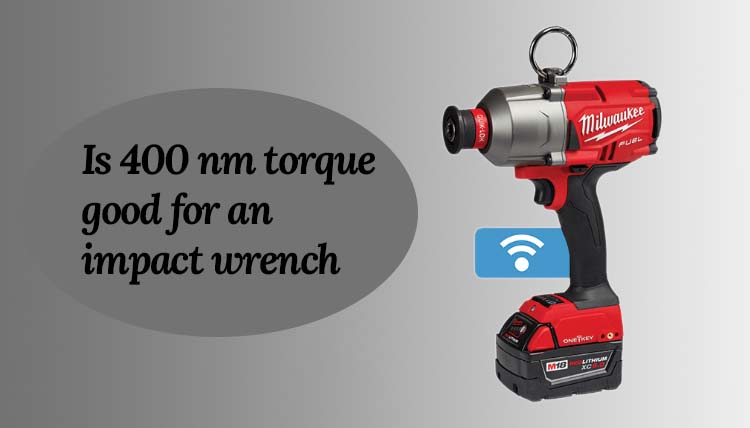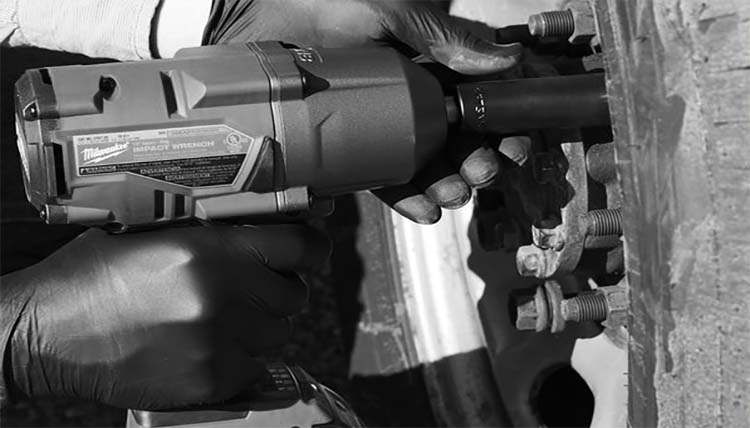If you’re a mechanic or just someone who likes to do your own repairs, you’ve probably asked yourself: Will a 3 gallon air compressor run an impact wrench? The quick answer is no. A 3-gallon air compressor can not able to run because the minimum requirement to run an air impact wrench is 2 CFM at 90 PSI and a 4-gallon tank. But a 3-gallon air compressor is unable to fulfill these requirements.
In this blog post, we’ll look at what factors influence how much power an air compressor can deliver and estimate whether a 3-gallon air compressor can run an impact wrench. So read on to learn more!

What kind of job can handle a 3-gallon air compressor?
If you frequently use power tools, an air compressor can be a great way to keep them supplied with enough power.
You can use a 3-gallon compressor for various purposes, such as inflating tires or sports equipment. It can also help you blow up pool toys or beach balls.
It will be ideal for anyone who needs an affordable and reliable air compressor for regular tasks.
How long does a 3-gallon air compressor last?
A 3-gallon air compressor will not have the same capacity as a larger unit, impacting how long it can run. Generally speaking, a 3-gallon air compressor will last for around 15 minutes. This is enough time to do light work, such as inflating a tire or using an air tool for a few minutes.
However, if you want to use the compressor for extended periods or more demanding tasks, you will need to look at a larger unit.
How long does it take to refill a 3-gallon air compressor?
It generally takes 2 to 5 minutes to refill a 3-gallon air compressor. The exact time will depend on the compressor’s CFM rating and the amount of pressure in the tank. For example, if the compressor has a CFM rating of 4 and the tank is currently at 100 psi, it will take approximately 3 to 4 minutes to fill it. A standard 3-gallon offers you a maximum of 135 PSI.
It is better to follow the user manual to know the compressor’s exact filling time.
Features of a 3-gallon air compressor
Airflow (CFM)
CFM stands for cubic feet per minute and measures how much air an air compressor can deliver. It is usually measured at atmospheric pressure and a standard temperature of 68 degrees Fahrenheit. A 3-gallon air compressor can provide about 0.5 CFM at 90 PSI or 1 CFM at 40 PSI. This means that the compressor can deliver 0.5 to 1 cubic feet per minute of air.
The amount of CFM an air compressor can provide is important to consider when choosing. If you need an air compressor for a specific project, such as painting or sanding, you will want to select a model that can provide the necessary amount of CFM. Otherwise, you may not be able to complete your project on time.
Air pressure (PSI)
PSI stands for pounds per square inch and is a unit of measurement for air pressure. Standard 3-gallon air compressors can deliver around 90 PSI. 90 PSI pressure is sufficient for most applications, such as filling tires or painting works.
However, some air compressors can deliver much higher pressures, up to 120 PSI or more. Such as Makita MAC320Q Electric Compressor can provide 2.0 CFM at 120 PSI.
The higher-pressure air compressors are typically ideal for more demanding applications, such as industrial painting or sandblasting. Regardless of the pressure rating, all air compressors work by compressing atmospheric air and storing it in a tank.
When the air compressor tank gains the maximum amount of pressure, the compressor will shut off until the stored air is used and the pressure in the tank drops below the maximum. At that point, the compressor will start again and repeat the cycle.
Tank Size (liter)
A 3-gallon air compressor can hold up to 12 liters in the tank. That is enough to handle simple tasks. The tank size of a 3-gallon air compressor is usually about 10 inches in diameter and 20 inches tall—the same size as a propane tank you might use for a barbecue.
When the compressor is turned on, the motor will pump the air through the tank and out the hose.
The minimum requirement to run an air impact wrench
A minimum CFM, PSI, and tank size requirement of a compressor to run an air impact wrench are 40 PSI, 3 CFM, and a 4-gallon tank. Most air impact wrenches require at least 90 PSI to function correctly, so a small compressor may not be able to provide the exact amount of power.
If the tank is too small, it will not be able to store enough air to keep the impact wrench running for extended periods. As a result, it is crucial to choose a compressor that meets or exceeds the minimum requirements.
Will a 3 gallon air compressor run an impact wrench?
A 3-gallon air compressor will not run an air impact wrench. An air impact wrench requires a much larger volume of air to operate than a 3-gallon air compressor can provide. A 3-gallon air compressor is typically only able to provide enough volume of air to operate small tools, such as nail guns or staplers.
If you’re looking for an air compressor that can run an air impact wrench, you’ll need to purchase a unit with a much larger tank. The tank size will determine the amount of air the compressor can store. Six gallons or more tank size will be necessary for most applications.
You may also like: What size air compressor do I need for impact wrench
FAQS
Will a 3-gallon air compressor fill a car tire properly?
A 3-gallon air compressor is a powerful tool that can be used for various tasks, from inflating car tires to powering nail guns. However, one common query about 3-gallon air compressors is whether or not they have enough power to fill a car tire.
It usually depends on a few things, including the tire’s size and the air required to fill it. Generally, a 3-gallon air compressor will have no problem filling a standard car tire. However, if the tire is significantly larger or requires more air than average, it may take some time to fill it.
What size air compressor do I need for changing tires?
There’s no exact answer to this question, as the size of the air compressor you’ll need to change tires will depend on the specific tires you’re using. However, as a general rule of thumb, you’ll need an air compressor that can generate at least 120 psi of pressure to change a tire successfully.

If you’re using a standard passenger vehicle tire, you may get away with a smaller air compressor, but if you’re dealing with larger truck or SUV tires, you’ll need something that can generate more power.
In any case, it’s always better to choose an air compressor that’s slightly too powerful than one that’s not powerful enough. That way, you can be sure that you’ll be able to change your tires quickly and easily, regardless of the situation.
Why is it recommended to use a larger air compressor to run an impact wrench?
In order to understand why it is recommended to have a larger air compressor to run an air impact wrench, it is first necessary to know how an air compressor works. Air compressors usually operate by using a piston to compress air inside a chamber. This compressed air is released through a nozzle and can be used to power tools like an impact wrench.
The discharged force of the air from the compressor will determine how much torque the impact wrench can generate. A larger air compressor will be able to generate more torque, making it ideal for use with an impact wrench.
In addition, a larger air compressor can also store more compressed air, which can power the tool for longer periods before needing to be refilled.
Conclusion
A 3-gallon air compressor is not powerful enough to run an air impact wrench. The compressor needs to have a much larger tank in order to store enough air to keep the impact wrench running.
If you’re searching for an ideal air compressor that can run an air impact wrench, you’ll need to purchase a unit with a tank size of 8 gallons or more. With a bit of research, you can find the perfect compressor for your needs.
See Also:



